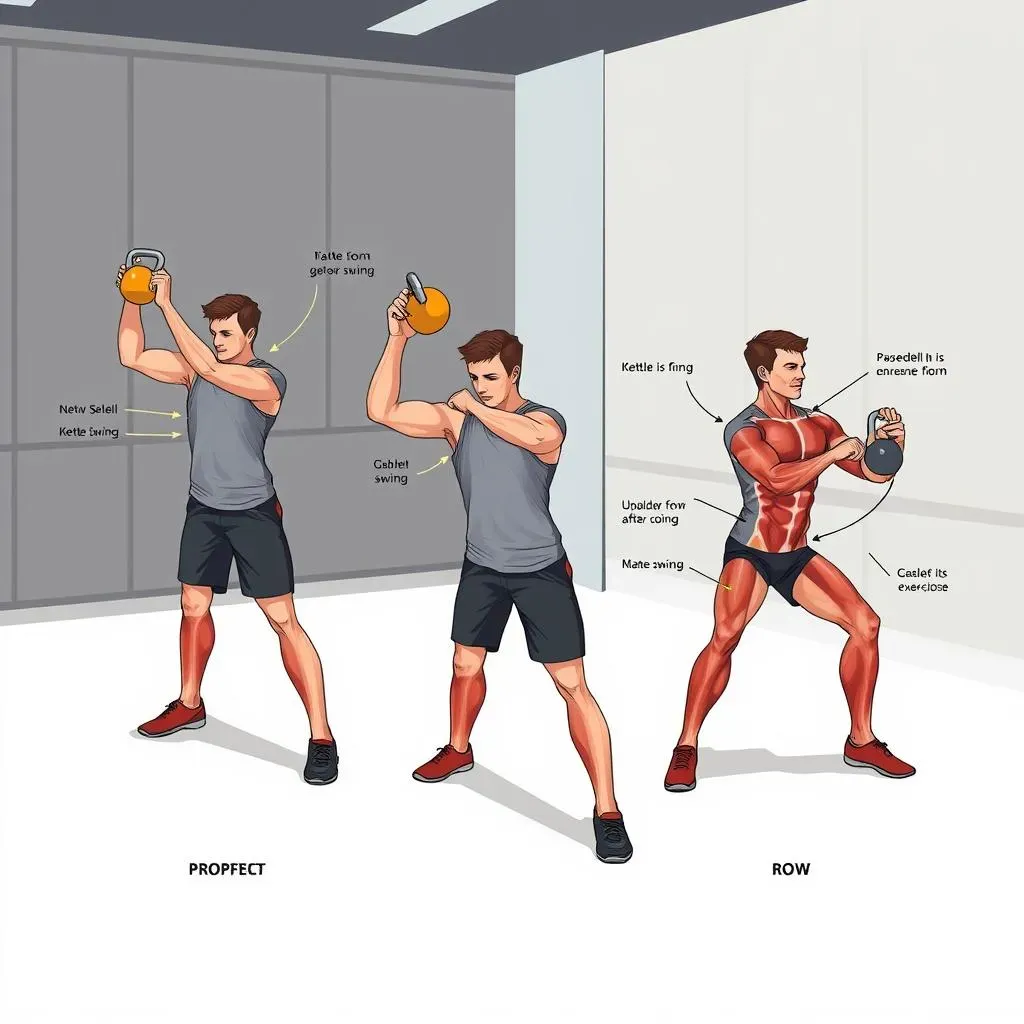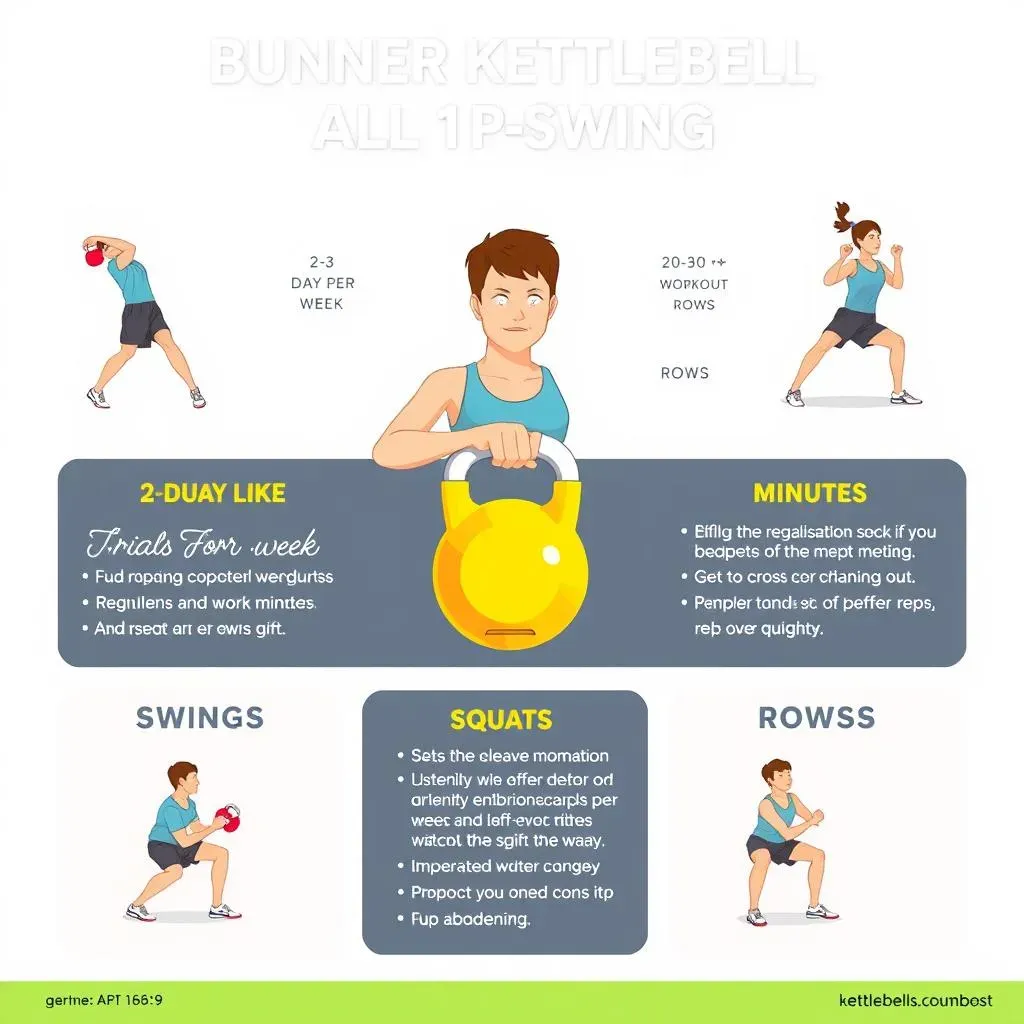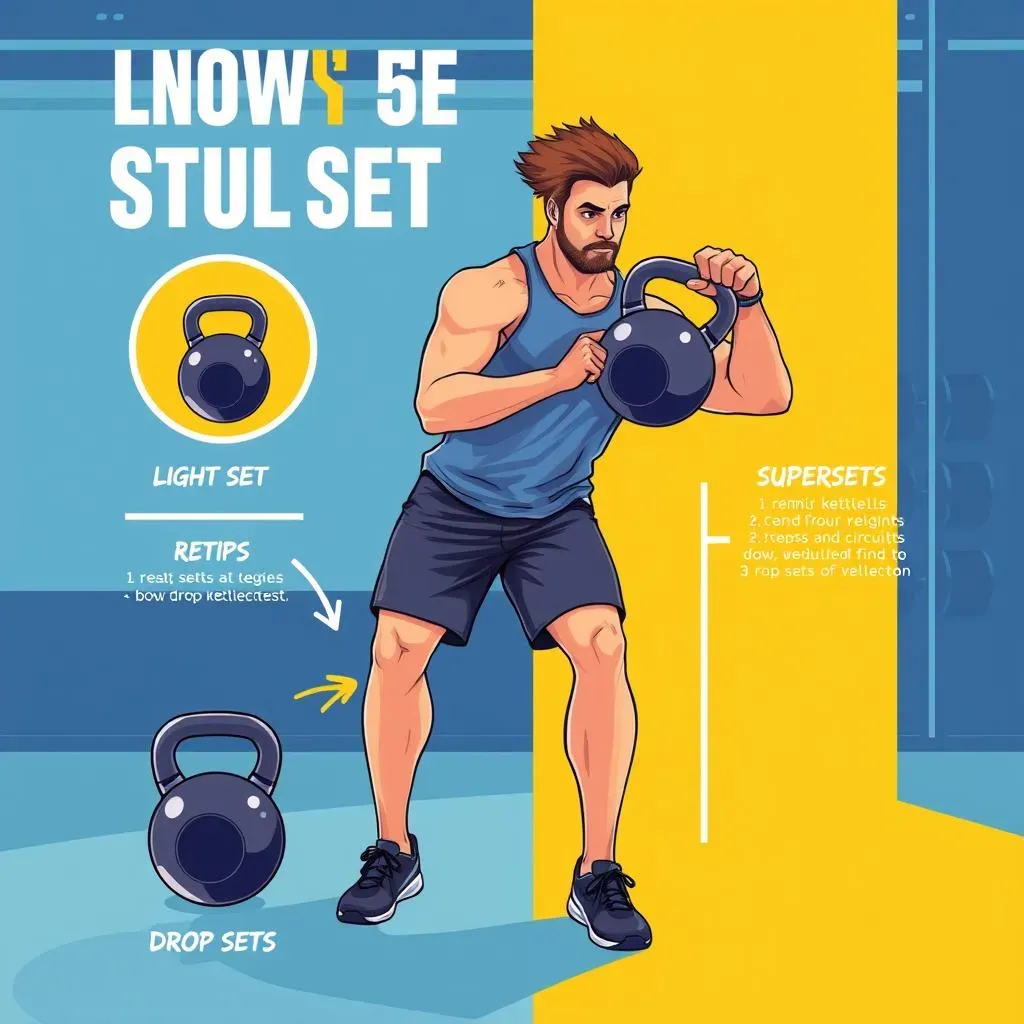Table of Contents
Ready to unleash your inner strength and sculpt a fantastic physique? Then get ready to embark on an exciting fitness journey with our comprehensive guide to the kettlebell beginner workout! This isn't your grandma's workout; kettlebells offer a dynamic and efficient way to build strength, improve endurance, and boost overall fitness. Forget boring routines – we'll equip you with the knowledge and practical exercises to create a kettlebell beginner workout that's perfectly tailored to your needs and fitness level. Inside, you'll discover the fundamental movements that form the bedrock of any successful kettlebell training program. We'll break down each exercise step-by-step, ensuring you master proper form and technique to avoid injuries and maximize results. Learn how to choose the right kettlebell weight, build a personalized workout routine, and track your progress as you steadily increase your strength and confidence. This kettlebell beginner workout guide is your roadmap to a stronger, healthier, and more empowered you. Let's get started!
Getting Started with Your Kettlebell Beginner Workout
Choosing Your Kettlebell
So, you're ready to dive into the world of kettlebells? Awesome! The first step is selecting the right kettlebell for you. Don't worry about getting it perfectly right; you can always adjust later. For beginners, a lighter weight is your best friend. A good starting point is an 8kg (18lb) kettlebell for women and a 12kg (26lb) for men. This allows you to focus on proper form and technique without getting overly fatigued. Remember, it's better to build a solid foundation than to rush into heavier weights and risk injury. Check out our beginner kettlebell workout guide for more detailed advice.
Think of it like learning to ride a bike – you wouldn't start with a mountain bike, would you? You'd start with something manageable. Once you feel comfortable and confident, you can gradually increase the weight. Trust me, the feeling of mastering a new exercise is incredibly rewarding!
Weight | Suggested for |
|---|---|
8kg (18lb) | Most Women |
12kg (26lb) | Most Men |
Setting Up Your Workout Space
Next, you need a safe and comfortable space to work out. You don't need a fancy gym; a clear area in your living room or backyard will do just fine. Make sure you have enough space to move around freely without bumping into furniture or walls. A good workout mat can add extra cushioning and comfort, especially if you're working on a hard surface. Good lighting will also help you maintain your form and stay focused. Also, have a bottle of water handy to stay hydrated throughout your workout. This will make your kettlebell beginner workout much more enjoyable.
Before you start swinging that kettlebell, make sure you have a clear area. Clear away any obstacles like rugs, pets, or small children (unless they're helping you, that's awesome!). Consider wearing comfortable workout clothes and shoes that provide good support. And remember, starting slow is key! Don't try to do too much too soon. Consistency is more important than intensity, especially when you're just beginning. Check out this beginner's guide for more tips.
- Clear space
- Workout mat
- Water bottle
- Comfortable clothing
Mastering Essential Kettlebell Exercises for Beginners

Mastering Essential Kettlebell Exercises for Beginners
The Kettlebell Swing: Your Foundation Exercise
Let's start with the king of kettlebell exercises: the swing. It's deceptively simple, yet incredibly effective for building strength and power in your posterior chain (glutes, hamstrings, and lower back). The key is hip hinge – think of pushing your hips back as if you're sitting in a chair, keeping your back straight. The swing isn't about arm strength; it's about using your legs and hips to generate power. This beginner-friendly exercise is perfect for building a strong core. Check out our beginner kettlebell workout for video demonstrations.
Don't worry if you don't get it perfectly right away; it takes practice. Start with a lighter weight and focus on the movement. Gradually increase the weight as you get stronger. Remember, proper form is crucial to avoid injury and maximize results. The satisfying 'woosh' of the kettlebell as you master the swing is pure magic. The feeling of power and control is addictive!
- Focus on hip hinge, not arm strength
- Start with lighter weight, gradually increase
- Maintain a straight back throughout the movement
Goblet Squats: Building Lower Body Strength
Next up is the goblet squat – a fantastic exercise for strengthening your quads, glutes, and hamstrings. Hold the kettlebell close to your chest, like a goblet (hence the name). Squat down as low as you comfortably can, keeping your back straight and your chest up. Focus on controlled movements; don't bounce or rush. This is another fundamental exercise that builds a solid base for more advanced movements. Remember consistency is key! For a more detailed explanation, see our beginner's guide to kettlebells.
The goblet squat is a great way to build lower body strength and improve your balance and coordination. It's also a fantastic exercise for building core strength, as it requires you to engage your core muscles to maintain proper posture. And don't forget to breathe! Inhale as you lower down, exhale as you stand up. This will help you maintain control and prevent dizziness.
Muscle Group | Benefit |
|---|---|
Quads | Strength and definition |
Glutes | Power and stability |
Hamstrings | Flexibility and strength |
Kettlebell Rows: Strengthening Your Back
Finally, let's work on your back with kettlebell rows. This exercise targets your back muscles, improving posture and overall upper body strength. Start with a lighter weight and focus on controlled movements. Keep your back straight and your core engaged. Pull the kettlebell towards your body, squeezing your shoulder blades together at the top of the movement. This movement will improve your posture and build strength in your back and biceps.
Remember to maintain a neutral spine throughout the exercise. Avoid rounding your back, as this can lead to injury. Concentrate on squeezing your shoulder blades together as you pull the kettlebell. This will help you engage the correct muscles and maximize your results. For more guidance on proper form and technique, see our beginner kettlebell workout plan.
Creating Your Perfect Kettlebell Beginner Workout Routine

Creating Your Perfect Kettlebell Beginner Workout Routine
Building Your Routine: Frequency and Intensity
Now for the fun part: crafting your personalized kettlebell beginner workout routine! We've covered the basics, but now it's time to put it all together. A great starting point is a two-to-three-day-a-week schedule, with rest days in between. This allows your muscles time to recover and rebuild, preventing overtraining and promoting muscle growth. Remember, consistency is king! Don't try to do too much too soon. Start with shorter workouts (20-30 minutes) and gradually increase the duration and intensity as you get stronger. For more detailed workout plans, check out our beginner kettlebell workout plans.
Think of your workout routine as a delicious recipe. You wouldn't throw all the ingredients together at once, would you? You'd start with a base and add elements gradually. The same principle applies to your kettlebell beginner workout. Begin with a manageable number of sets and reps (e.g., 2-3 sets of 8-12 repetitions for each exercise), focusing on maintaining good form. As you progress, you can increase the number of sets, reps, or even the weight of your kettlebell. But always prioritize proper form over quantity. This ensures you're working your muscles effectively and safely.
- Start with 2-3 workouts per week
- Begin with shorter workout durations (20-30 minutes)
- Focus on good form over quantity
- Gradually increase sets, reps, and weight
Level Up: Progressing Your Kettlebell Beginner Workout

Level Up: Progressing Your Kettlebell Beginner Workout
Increasing Weight and Intensity
So you've mastered the basics? Fantastic! Now it's time to challenge yourself and push your limits. Increasing the weight of your kettlebell is a natural progression, but do it gradually. A good rule of thumb is to increase the weight by 2-4kg (5-10lbs) only when you can comfortably complete all sets and reps with perfect form using your current weight. Don't sacrifice form for heavier weight. Remember, slow and steady wins the race. Also, consider increasing the number of sets or reps before you increase the weight. For more advanced workout plans, check out our advanced kettlebell workout guide.
Don't be afraid to experiment with different workout structures. Try incorporating supersets (performing two exercises back-to-back with minimal rest), circuit training (performing multiple exercises in a continuous loop), or drop sets (decreasing the weight after each set to failure). These techniques will challenge your muscles in new ways and help you break through plateaus. The key is to listen to your body and adjust your workout accordingly. Remember that rest and recovery are just as important as the workout itself.
- Increase weight gradually (2-4kg)
- Prioritize perfect form over heavier weight
- Increase sets/reps before increasing weight
- Experiment with supersets, circuits, and drop sets
Adding New Exercises and Variations
Once you're comfortable with the fundamental exercises, it's time to expand your repertoire. There's a whole world of kettlebell exercises beyond the swing, squat, and row! Consider adding exercises like Turkish get-ups (a full-body exercise that challenges strength, balance, and coordination), clean and press (a dynamic movement that builds explosive power), or snatches (another explosive movement that works the entire body). Start with lighter weights and focus on perfect form before increasing intensity. Remember to consult our beginner kettlebell workout resource for proper technique.
Remember, progression isn't just about lifting heavier weights. It's about constantly challenging your body and improving your skills. Experiment with different variations of the exercises you already know. For example, try single-leg squats, Romanian deadlifts, or different types of rows. This will not only prevent boredom but also help you build strength and muscle in new and exciting ways. Always prioritize proper form, and remember to listen to your body. Overtraining can lead to injury and hinder your progress. Celebrate your achievements along the way!
Exercise | Primary Muscle Groups Worked |
|---|---|
Turkish Get-Up | Full Body |
Clean and Press | Shoulders, Legs, Core |
Snatch | Full Body |